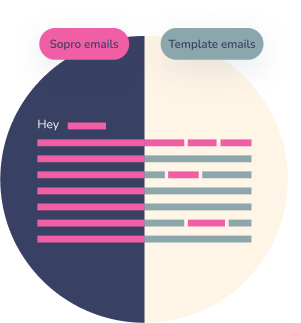WITH SOPRO
Our team of experts handles every aspect of campaign strategy and setup for you. We ensure that your outreach is coordinated across all channels, with consistent messaging that engages prospects and moves them smoothly through your sales funnel.

























Social display and audience syncing
Running effective social display ads is difficult due to the poor B2B targeting options available. Many businesses end up wasting ad spend on bad-fit prospects. Typically, match rates on these platforms are low, ranging from 5% to 20%.
With the right tech, your ads can be seen by more of your actual audience, warming them up for cold outreach, driving website traffic, and improving brand recall for increased conversions. But again, sourcing these systems independently is time-intensive and costly.
WITH SOPRO
Our Audience Adsync sends your total addressable market to Meta, Google, and LinkedIn, improving match rates to as high as 50%. This means you can target the right audience with your paid ads, ensuring you're in front of the best-fit prospects. We take care of syncing your audience so you can confidently run ads that make an impact.